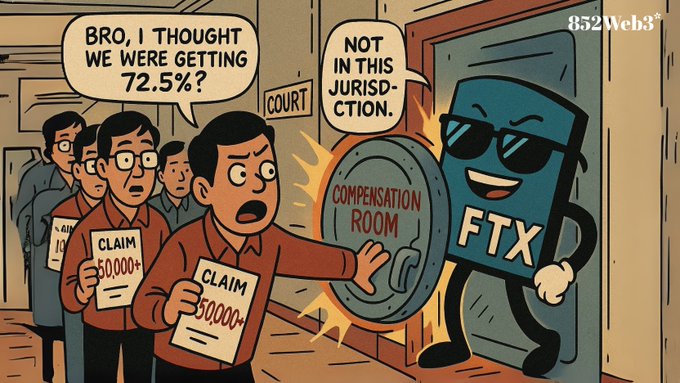As FTX’s compensation process moves forward, investors from China may face disqualification from receiving payouts.

FTX creditor representative Sunil recently shared updates on social media, revealing that out of an estimated $11 billion in total claims, around $470 million belong to restricted jurisdictions. Among these, Chinese investors hold the largest share, with $380 million in claims—accounting for 82% of the restricted total—making this one of the most critical issues in the ongoing liquidation.
Compensation Progress at a Glance:
- By February 2025, claims under $50,000 were compensated at 120%;
- By May 2025, claims above $50,000 received 72.5%;
- Future payout rounds are planned for October and December 2026, and throughout 2027;
- A full 100% compensation pathway is outlined, with interest payouts estimated between 40% to 80%.
Risks for Claims from Restricted Jurisdictions:
FTX’s trust fund is currently seeking legal advice regarding claims from 49 restricted jurisdictions, including China, Russia, Ukraine, and Saudi Arabia. If local laws prohibit cryptocurrency transactions or no authorized distributors exist, these claims could be frozen or even forfeited. Notably, China alone accounts for $380 million of these high-risk claims—meaning if China is officially designated a restricted jurisdiction, affected investors may lose their entire claims.
Legal Uncertainty and Compliance Battles:
No final decision has been made yet. FTX will first seek legal clarity, and if compliance cannot be ensured, the court may officially designate these jurisdictions as restricted. Affected creditors will be notified and given a 45-day window to appeal.
While FTX’s liquidation framework becomes clearer, differing regulations across jurisdictions highlight the uneven fates of global crypto investors. This situation reveals the deeper challenge of decentralized assets navigating a fragmented international legal landscape. As the Web3 ecosystem continues to globalize, striking the right balance between compliance and user protection remains a core challenge for the industry’s future.

